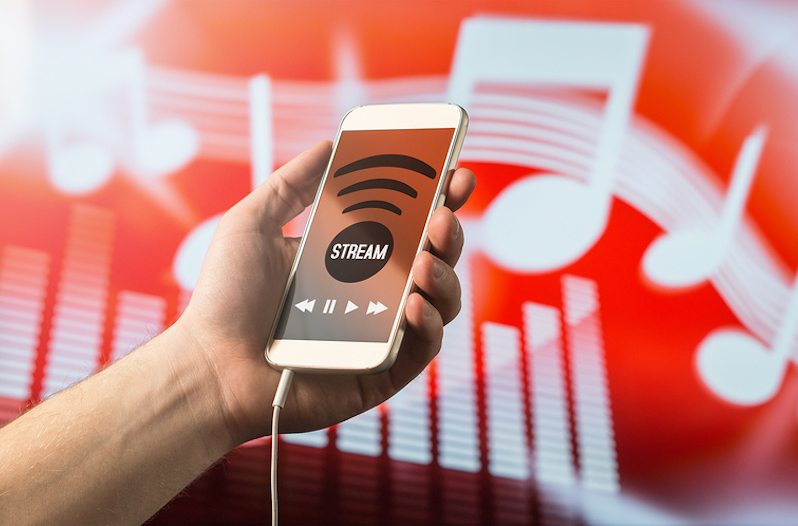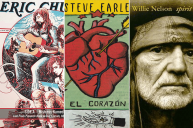Recent reports of Target stores possibly changing how they handle CDs, and word that Best Buy won't sell them at all soon, seem to further hasten the steady decline of a once-prominent medium.
For a bulk of the past 30 years, physical media sales took Garth Brooks, Shania Twain and others to the top of the country charts. Now, country music seems to mirror the rest of popular music, with its next stars gaining traction through social media and streaming services. For example, Maren Morris and Luke Combs used Spotify and other modern conveniences to beckon their arrivals. Just as pop star Lily Allen built a career off her Myspace presence in the mid-aughts, young country singers can overcome the newfound limitations of aging formats.
The narrative so far focuses entirely on the biggest fishes in the artist, label and distributor chain. Big box retailers, major labels and '90s country stars with high-dollar stadium tours will survive in the current landscape with or without compact disc sales. New stars with armies of social media followers will be fine, too.
What about independent artists in need of whatever extra money can be made at the merchandise table? Self-sufficient musicians weren't likely to have their music carried by major retailers anyway, so recent news doesn't directly impact them at all.
Indirectly, the slow death of CDs impacts how or when upstart artists and small labels issue physical media. Per conversations with two unsigned artists from opposite sides of the Atlantic, the smaller fishes in this larger scenario are evolving to survive without shunning a viable means to connect with fans.
Unsigned Nashville Artist Pauline Andrès
French-born singer and songwriter Pauline Andrès exemplifies the lesser-known artists having to strategically plan when and why they still handle CDs. For her, CDs still matter in part because they are an affordable and simple way to share her art with fans at live shows.
"Music is probably the most abstract form of arts," she says via email. "You cannot see it. You cannot touch it. It's basically like air. And when you really dig a song or a band, you want something you can hold. I think it helps make the connection to this music or artist a little more real or tangible. If you're a little guy on an indie label or DIY artist then CDs are definitely a good way to make a show a little more worthwhile. Because the shows themselves rarely pay much and often don't pay at all except for tips. You can easily make around $150 extra a night or more on CDs, based on the size of the room and attendance."
Streaming boosts physical sales for Andrès, as well. "I have two major sources of income and exposure online: Spotify and Bandcamp," she says. "Spotify, no need to explain. But Bandcamp is mostly because people want something more than cheap MP3s: either high-quality files or CDs and vinyls. And I do sell quite a lot of CDs via Bandcamp to people aged 25 to 50. They can stream on the platform and order the CD from there. It's super practical."
The do-it-yourself means by which Andrès tours and performs offers fans a connection to her and her music that's lost when they go see the types of artists slightly impacted by big box stores' sales trends.
"We're a small community in the know, which makes us all feel closer," she says.
UK-based Alt-Country Troubadour Mike West
On the opposite side of the pond, where closings of HMV locations spark the same discussion, metal musician turned roots music performer Mike West mirrors much of Andrès' business plan. He too finds value in CDs whenever he mans the merch table, crediting 80 percent of his physical music sales to live shows.
The affordability of CDs when releasing just a few tracks as an EP makes them a better immediate option than vinyl. "Local, independent record stores don't currently stock my work as they want the record in vinyl which isn't viable for my two EPs Rusted and Fail The Empire, but I am currently working on distribution for my first full length album The Next Life and with a limited run, it will be interesting to see how well it sells," West says via email. "I use feedback from my fan base to see what works and what they perceive to have the best value and they agree that an LP is something they would invest in. As a fan myself I tend to stick to LP purchases of albums."
West brings up a good point about independent record stores. The revitalization of vinyl in recent years brings new life to some mom-and-pop establishments and used book stores willing to carry records. Unsigned artists can benefit from this trend as a means to sell their own LP. These businesses also create new places to perform live. Unfortunately, their limited space, budgets and business demands may not make for an ideal spot to sell CDs. That's not to knock record stores' ability to support local artists. Instead, it's a broader view on how a changing marketplace reshapes both local and global supply chains when it comes to physically-released music.
The Final Verdict on Independent Artists' CD Sales
Per two artists in different counties, CD sales aren't necessarily dead yet for self-sufficient musicians. For them, making a few extra dollars here and there can make or break their goals, while a more established name is certainly less dependent on that extra $150 or so per night.
The medium's phasing out in the mainstream might lead to its widespread decline soon, similar to the assumed death of vinyl records that preceded CDs' heyday. Vinyl never went away, surviving through indie bands' collectable 7-inches and DJ's 12-inch mixes. It became a niche product, so far removed from its mainstream peak that most thought it'd vanished completely. Perhaps CDs will meet the same fate, with the medium trudging along into the 2020's as a promotional tool and a valuable opportunity for smaller artists to keep gas in their tour vans.




